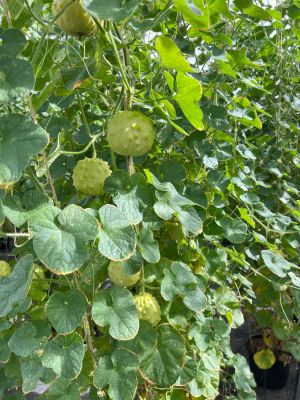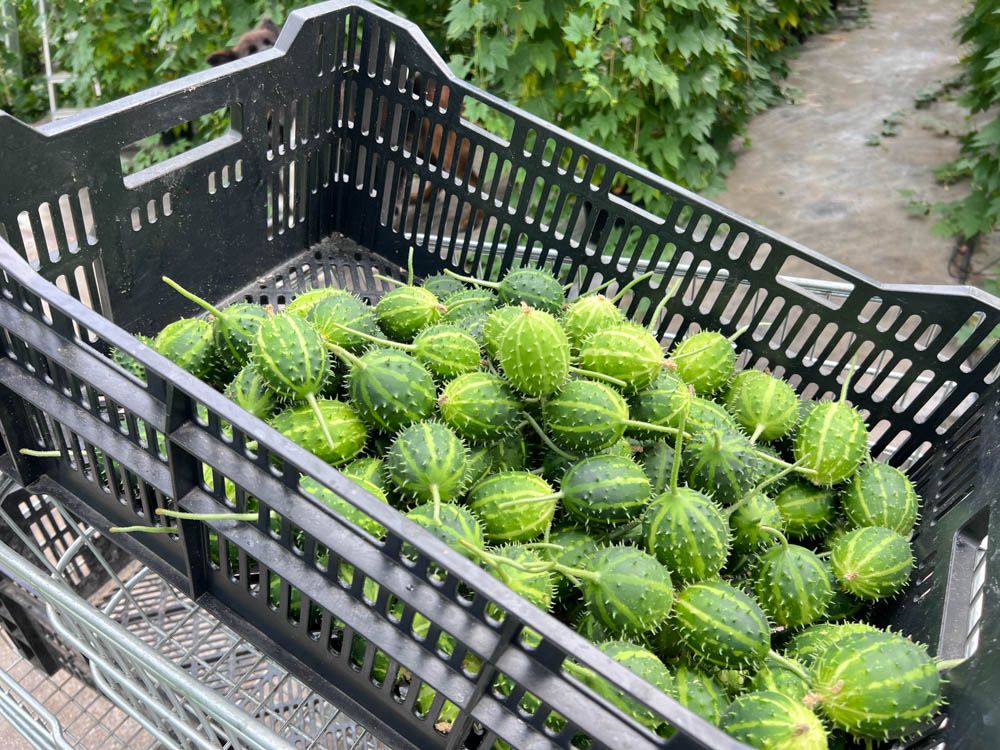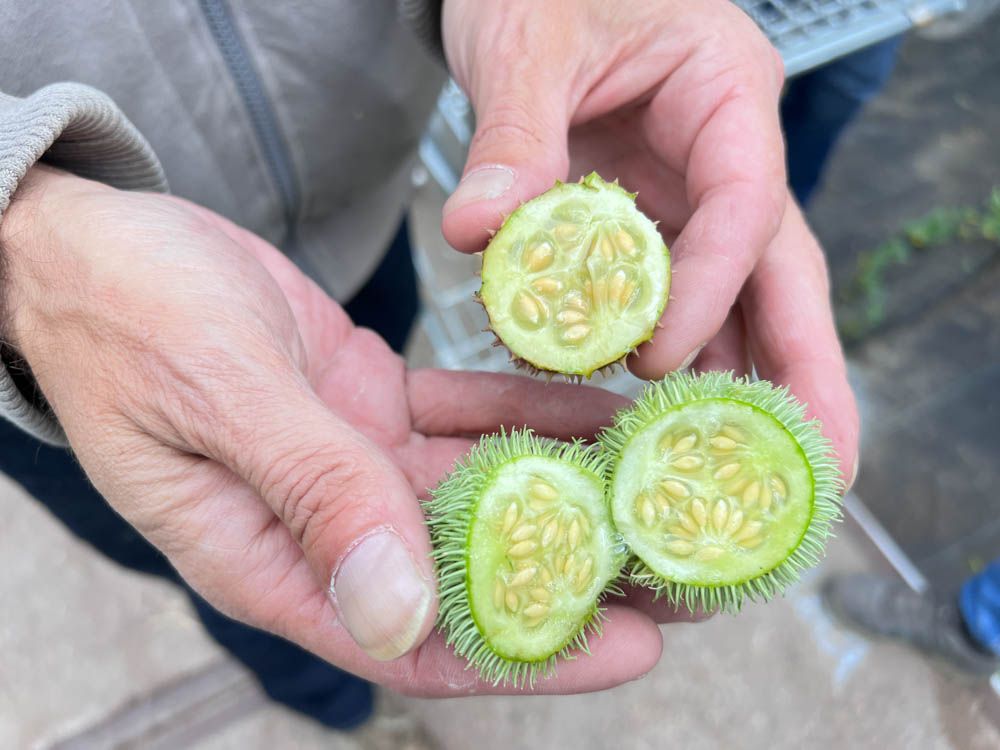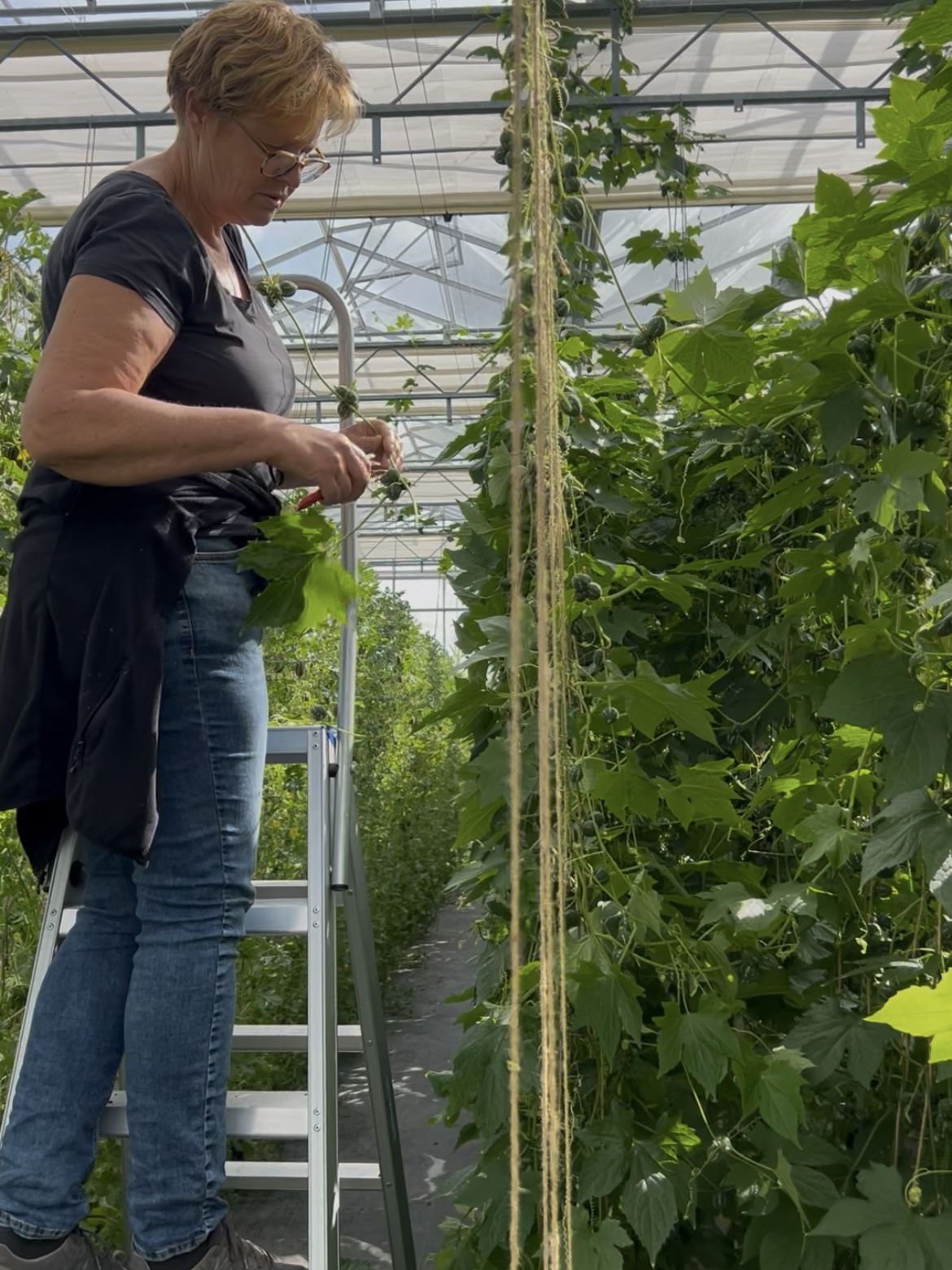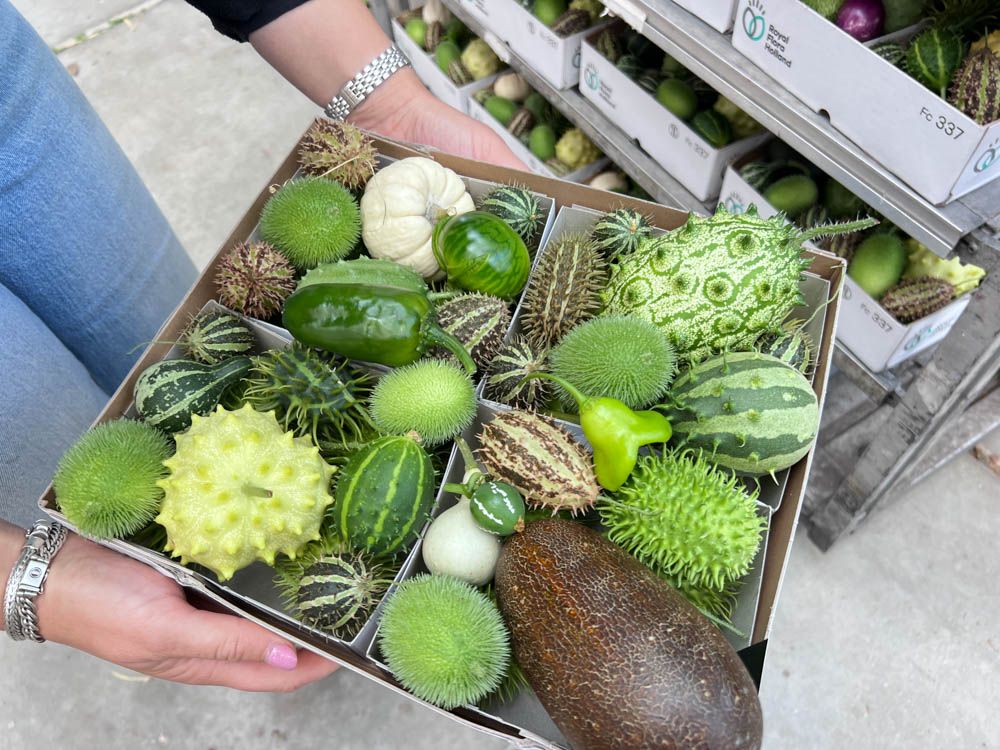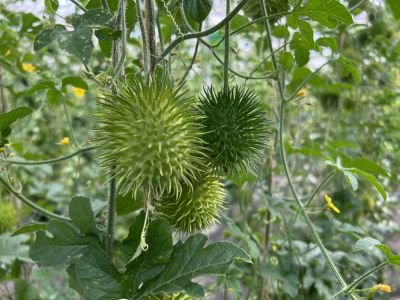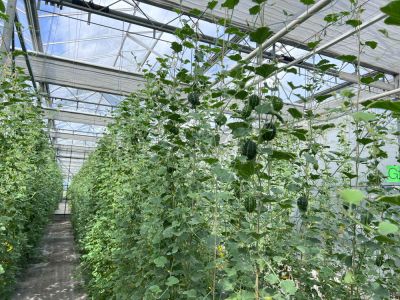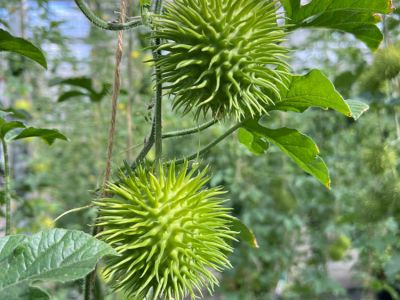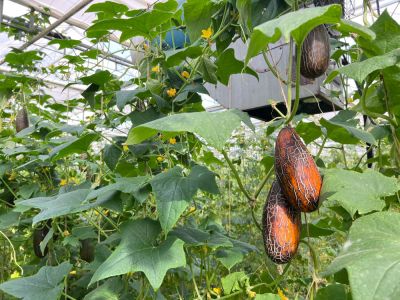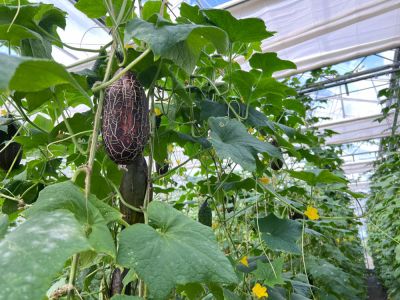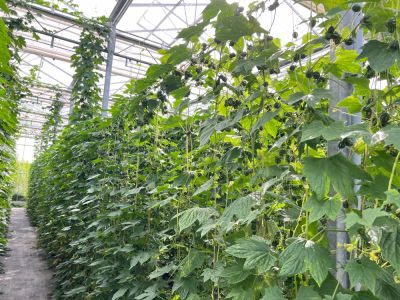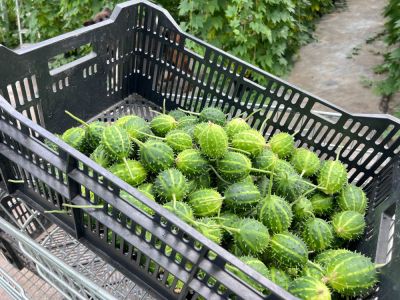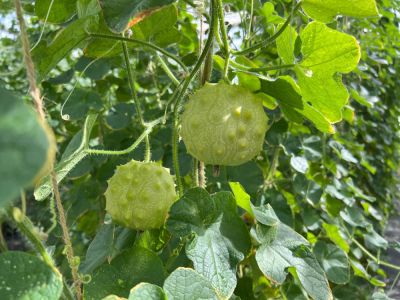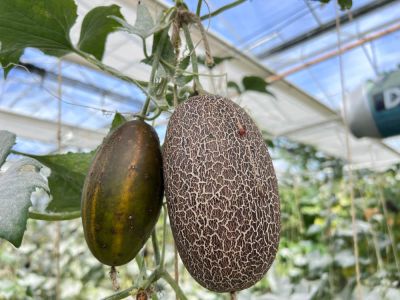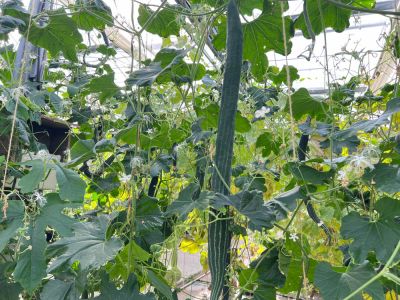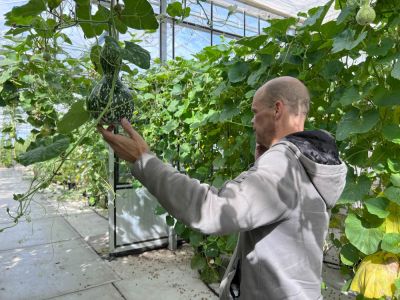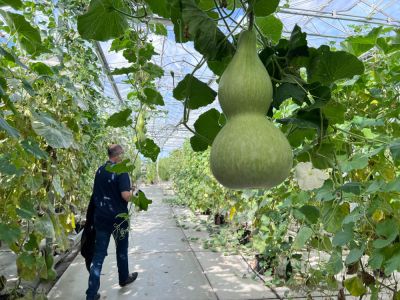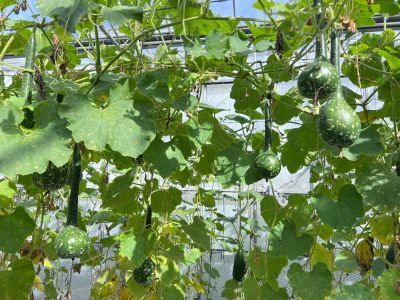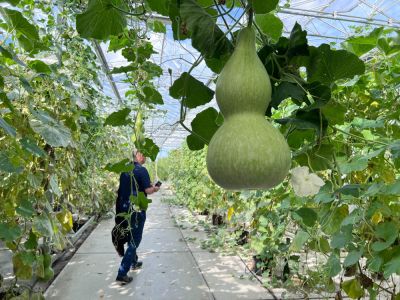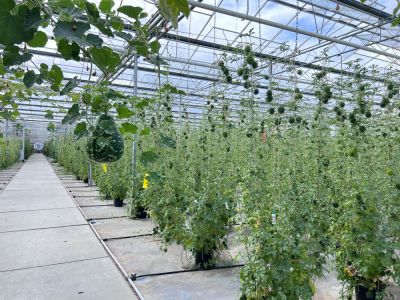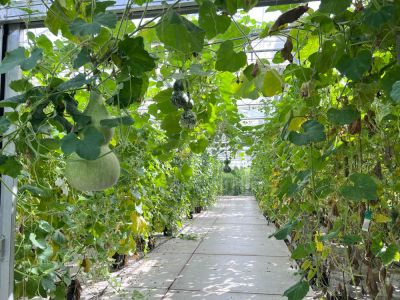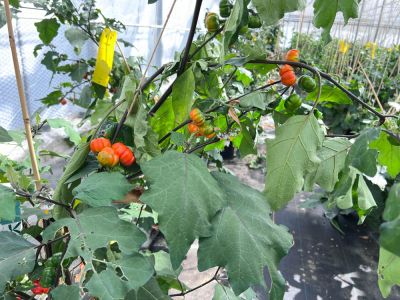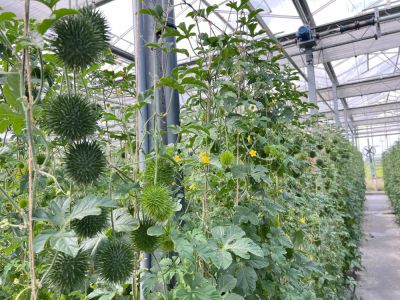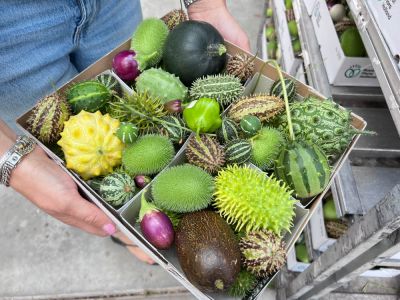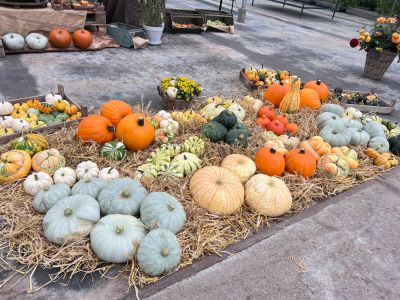Deze week bij FloraPodium
Ornamental fruits
In the spotlights
Autumn colours, unusual shapes and a high decorative value: this season, ornamental fruits are the product for florists and designers. Whether incorporated into an arrangement or displayed on their own, these fruits draw the eye. We visited nursery Bloeiers and stepped into their extraordinary fruit jungle, where various types of cucumis, diplocyclos, aubergines, chillies and gourds are grown.
Bloeiers
Over 25 years ago, the founder of Bloeiers started out in Brabant with just a few cut flower varieties. She soon discovered that distinctiveness lies in small-scale cultivation and special products. Later, she took over her parents’ business and moved to the north of the Netherlands. With the addition of a greenhouse, she could fully dedicate herself to her passion: growing ornamental fruits for the higher-end segment. Always thinking from the florist’s perspective, with attention to shape, shelf life and presentation.
What makes cucumis so special?
The cucumis family is versatile and fits perfectly into the autumn palette. Think of combinations with foliage, branches or other seasonal materials. Belonging to the cucumber family (cucumis), the plants produce fruits with unique forms, colours and textures. For florists, that means eye-catchers that keep their beauty for a long time, variations within a single type, and plenty of scope for creativity. Whether working in a classic style or preferring modern and more untamed arrangements, ornamental fruits always add something special.
Cultivation
Own seed selection
All plants are raised from seeds of their own selection. Each variety has its own characteristics in shape, colour and growth habit. As these are annual crops, everything is cleared at the end of the season. Selecting and cultivating the right seed is therefore a true skill and essential for quality.
Labour-intensive process
Cultivation takes place entirely in the greenhouse. All plants are trained upwards along strings so the fruits can hang freely and develop without damage. Both the fruit-bearing crops and the climbing types such as diplocyclos are carefully tied.
Diplocyclos requires extra manual work: every vine is guided by hand, leaves are individually trimmed with small scissors, and tendrils are carefully untangled. At harvest time, whole vines are cut, fruits included.
Other ornamental fruits, such as cucumis, chillies and various gourds, are harvested individually by hand. The right degree of ripeness is crucial. Harvested too early, they shrivel; too late, they lose colour and firmness. It all comes down to perfect timing and precision.
Bumblebees for pollination
Pollination is essential for fruit formation. In the greenhouse, bumblebees take care of this. The plants produce both male and female flowers. Beneath each female flower lies an ovary, which will only develop into a fine fruit if the flower is well pollinated. This natural process results in strong, decorative fruits of high quality.
Sustainable and certified
Bloeiers uses biological pest control and is both MPS-A and GAP-certified. The team consists solely of Dutch-speaking staff, ensuring clear communication and the proper transfer of specialist knowledge.
Care tips for florists and consumers
Store ornamental fruits at room temperature, away from direct sunlight
Use a dry, clean surface to extend shelf life (often 3 months or longer)
Avoid draughts and temperature fluctuations
Ornamental fruits are more than decoration alone. They tell the story of intensive cultivation, attention to detail and passion for the craft. For florists, they are a powerful element to surprise and inspire customers.
FloraPodium, 11 September 2025






